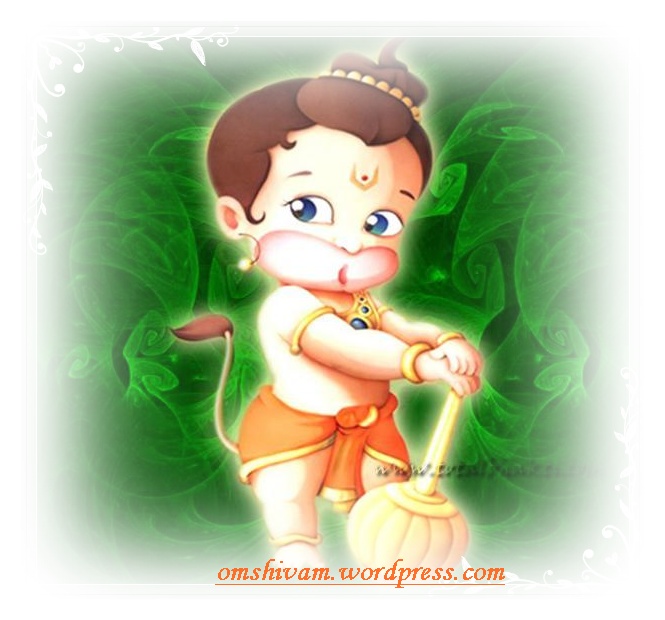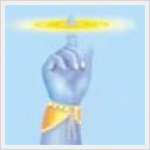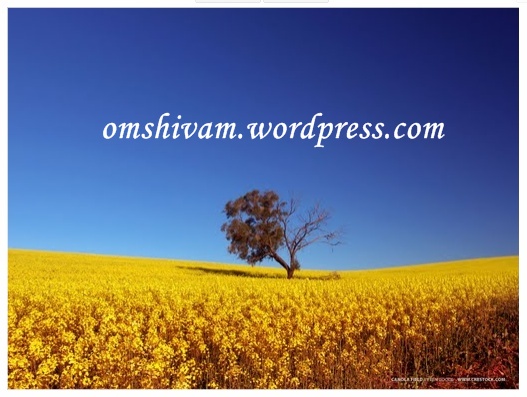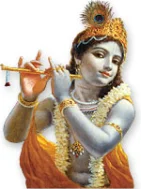The Story of Ganga
The importance, which the ‘Bhagavad Gita’ has in the field of spirituality, the same prominence, and importance has been given to the holy river Ganges in the field of religion and religious activities. No other river has been as much mentioned in the `Purana’ as the holy Ganges. According to the Puranas the Ganges is the holiest of all the shrines on this earth. Not only the man, but even the most mean creatures like insects etc get liberated and achieve salvation.
The holy sight of Ganges gives knowledge,Splendours,name,fame etc. The gravest of sins like Brahmhatya and Gauhatya (killing of a cow) gets absolved by the mere touch of Ganga holy water. Lord Vishnu himself has described the importance of river Ganges in the following way, he says to Garuda.
DARSHANATSPARSHANATPANATTATHA GANGETI
KEERTANAT PUNATYAPUNYANPURUSHANA SHATASHOTHA SAHASRASHAH
(Thousands of man sin gets destroyed by the holy sight of the Ganges, and he becomes pure, by the touch of Ganges water, by having it, or by just pronouncing ‘Ganga-Ganga’. For this reason Ganges is also calledSANSARTARINI (Saviour of this world).
ORIGIN OF GANGA
There are many of stories regarding the origin of Ganges the most famous among the sacred texts is from Ramayana Bal Kand BramhaRishi Vishwamitra narrates the story of Bhagirath & the descent of Ganga to Prince Shri Rama.
Bhagwati GANGA, like PARVATI ,SARASWATI and LAXMI is one of the seven SHAKTIS of supreme Goddess MAHAMAYA ADISHAKTI.
There are three main forms of River Goddess Ganga.
The First one the Spiritual form born from the Charanmrita of lord Vamana fifth Avatar of Bhagvan Vishnu.
The legend of Bhagavata has it that the Vamana avatar was taken by Vishnu to restore authority of devas over the heavens, which was taken away by force by the King Bali. Vamana in the disguise of a short Brahmin, carrying a wooden umbrella requested three steps of land for him to live in. Given a promise of three steps of Land by King Mahabali against the warning given by his master Sukracharya, Vamana, The Supreme God grows so huge that he could cover from heaven to earth, earth to lower worlds in two simple steps.When The Holy feets of Lord vamana reached Brahmaa Loka.,Brahmaa Worshipped the holy feets and Goddess Ganga appeared from the charanamrita of lord Vamana.
King Mahabali unable to fulfil the promise of three paces of Land to the Supreme God, offers his head for the third step. Thus Vamana places his third step on King Mahabali’s head and gives him immortality for his benevolenceVamana taught King Mahabali that arrogance and pride should be abandoned if any advancement in life is to be made, and that wealth should never be taken for granted since it can so easily be taken away. Vamana then took on the form of Mahavishnu. He was pleased by King Mahabali’s determination and ability to keep his promise in the face of his spiritual master’s curse and the prospect of losing all his wealth. Vishnu named the King Mahabali since he was a Mahatma (great soul)
Mahavishnu also declared that Mahabali would be able to rule the universe in the following yuga (age).
The Second Divine form of Ganga was born as the daughter of ‘Himalaya’ The King of mountains and ‘Maina’ and sister of Goddess Parvati according to the Valmiki Ramayana. . The deities invited Ganga to heaven.
From that time onwards, ‘Ganga’ started living inside the ‘Karmandala’ (a spout shoped vessel). According to Kritivas Ramayana the deities had taken ‘Ganga’ to Lord Shiva to get her married with him..

The Third Earthly form of Ganga as the Sacred River.
The Story of Ganga the river that flows from Heaven to Earth
During the Devaasur sangram (the battle between the gods and devils) the devas defeated the asurs and the remaining asurs fled the battle field and hide themselves in deep oceans.
The asuras continued this dirty tactics every time ,they attack and hide,fed up with this the Devas went to Lord Vishnu , Bhagvan Vishnu advised Devas to ask the help of Maharishi Agastya.
Agastya is one of the greatest of the Seven Sages or Saptarshis.
Devas soon went to the Mahrishi & asked his blessings and requested to drink the ocean for the well being of goodness on earth & heaven .

The Maharishi Agastya accepted the request & drank the entire ocean as the devas desired.
Now the devas regained heir confidence and started the war again, the Devas fought very bravely & finally attacked the hideouts of the evil asuras and finished them.
As soon as the war was over the Devas thought the pupose for which the qcen is beig dried is finished so all the Devas requested Agastya to fill the ocean as before. then the Maharishi smiled & said that it is not possible as he had digested all the ocean he dranked so only . The Devas asked the Maharishi .oh God Agastya we all devas are thankfull to you but is there any way to save the earth from be scorched by the heat of Sun God .
Then Maharishi Agastya said only Ganga can make the oceans filled again.
But the task of bringing Ganga to earth was the most difficult one.And it was not possible to Devas also.This impossible task was made possible by a earthly man Rajarishi Bhagirath.
The Story of Bhagirath & the Descent of Ganga on Earth
According to sacred texts The King Sagar the descendent of Sun God (Suryavanshi) performed a ‘Ashvamedh Yagya’ in which a horse was set free.This horse was followed by his sixty thousand sons.
Indra, with the motive of destroying the effects of that ‘Yagya’ stole that horse and tethered it outside the hermitage of sage Kapila.

King Sagar sent his sons all around the world to search the ashwa of the yagya They searched every place on earth but were not able to find the Yagya horse any where on earth.
Then all the princes digged the earth to make way to the nether world.This caused terrible earthquakes causing heavy destructions on the surface of the earth.
After searching the nether world too they could not find the yagya horse
Accidently the found an opening to a world which led to a beautiful forest. This beautiful and darkgreen forest was the mediating place of a Great sage Kapila.
The sixty thousand sons of Sagar came searching for the horse to the hermitage of Sage Kapila. They started to insult the sage suspecting him as the theif of the yangya horse .They continued to create nuisance in the meditation of the sage .The enraged sage Kapila cursed them and burnt all the 60000 princes to ashes with the Yogic fire of his eyes in a moment .
Anshuman grandson of King Sagar came searching for his sixty thousand of his relatives, to Kapila’s hermitage.There the prince saw the yagya horse and a mountain of ash.
Prince Anshuman at first bowed to the sage and asked about his relatives. The Sage kapila told him the whole incident that took placed there.
When he came to know about the whole story the prince broke down with grief at the mountain of ashes of his relatives.
Prince Anshuman asked for forgivness for the sin his ancesters had commited by misbehaving a Great Yogi Kapila.The Prince falled on the feets of Kapila to relive the 60000 prince from the terrible curse of the great Sage & he requested Bhagvan Kapila to tell about the means by which his relatives could attain salvation. Kapila said that the 60000 souls would attain salvation, only if the water of Ganga in Brahmaa loka were sprinkled on them.
Following the instructions of Kapila,
Anshuman started doing penance on the Himalaya. But he was not successful in his attempt to bring Ganga to earth. His son Dilip too tried, but in vain,followed by the genaration of austerites.
atlast But Dilip’s son, Bhagirath was determined to get this task done. He started meditating intensly for several years
Bhagiratha, continued his efforts to bring the Ganga to the earth from the heavens to purify the ashes of his ancestors and bring them back to life.

After many many years of Tapasya ( Penace),Bhagirata’s prayers were rewarded by Gods which his genarations has tried their best.
Bhagiratha, the son of Dileep was successful in getting a boon from Lord Brahma, and finally Ganga got pleased and as a result of which ‘Ganga’ descended down to earth. The force of the current was so great that there was a fear of her entering the nether world, unless she was stopped on the earth the Ganges rushed to the earth; however, the might of the river was too much for the earth to withstand. Fearing a catastrophe, Bhagirata prayed to Shiva, Bhagiratha pleased Lord Shiva and requested him to hold her in his Jata (hairs). Lord Shiva accepted it and did the same as requested.
Lord Shiva who held out his matted hair to catch the river as she descended,
The Goddess little proud about her powers smiled at the God of all Yogis” shiva” .She thought who is able to withstand her terrible force
she descended towards earth with great force only to fall in the matted hair locks Jattas of Bhagvan Shiva and thus softened her journey to the earth.Ganga tried to unlock her from the jatta but was not succesfull .Goddess ganga tried a full year get free but failed then only Goddess ganga was able to realize & understand the Greatness of Lord Shiva and asked for forgiveness .Lord Shiva get pleased and blessed Goddess Ganga.
The Ganga thus became an attribute of Shiva. .
This manifestation of Shiva is known as Gangaadhara
as Lord Shiva Saved the earth from flooding, by receiveing Ganga on his matted locks.
King Bhagirath then worshipped Lord Shiva and Shiva blessed him and released Ganga from his locks in seven streams. The seven streams of Ganga are Bhagirathi, Janhvi, Bhilangana, Mandakini, Rishiganga, Saraswati and Alaknanda which merge into Ganga at Devprayag. The rock on which King Bhagirath is believed to have meditated, is called Bhagirath Shila and is located near the temple of Ganga.
Lord Gangadhara released Ganga on the earth, as a result of which Ganga was subdivided into seven streams
1) Dwadini, 2) Pavani and 3) Nalini flew towards the east 4) Vakshu, 5) Sita, 6) Sindhu flew towards the west and the seventh stream followed the route, as instructed by Bhagiratha, and hence was called 7)
JANHVI – Another name of the Ganga is Janhvi.
Ganga followed Bhagiratha who was on his chariot. Because of her tremendous speed, all the villages, Forests, etc in the way were either getting submerged or drowned.

Sage Jahnu who was doing a yagya in his hermitage got angry when his hermitage was submerged in the Ganga. He drank whole of the Ganga by his yogic power. At this the deities, and the men became restless and they requested Jahnu to release Ganga. ‘Jahnu’ released Ganga from his thigh by cutting it and for this reason Ganga is also called ‘Jahnavi’ or ‘Jahnusta’.
Bhagirathi Ganga quenched the thirst of the earth by filling all the oceans which were dried up by the Maharishi Agastyaas .
Bhagirathi Ganga fullfilled the wish of the Rajarishi and blessed his ancestors. The water of Ganga touched the ashes of Sagar sons who rose to the their eternal rest in heaven. Ultimately all the sixty thousand sons of Sagar were liberated by the sprinkle of the water of the Ganga.
Ganga Giving Moksha To The Souls
The story of Bhishma: Son of Ganga {Third form of Ganga the river}
THE STORY from the Mahabharata: The beginning…
Once Chakravarthy of Hastinapur King Santanu { a Rudragan born from the Jattas of Lord Shiva(Shantayate tanu one who gives coolness and youth to the body ,God of youth) cursed by Brahmaa to become an earthly man}went to the ganges for performing his Sandhya upasana upon opening his eyes after offering an evening prayer to the sacred river Ganga (the Ganges), found himself to be helplessly blurting forth these words: “You must marry me whoever you may be”, his senses were captured by the enchanted beauty of a female form that stood before him.
“O king”, she replied: “I shall but become your consort on certain conditions, to which you must agree first.” “Pray, what those may be, the fairest one?” asked the king. This is what he heard: “No one, including yourself, should ever ask who I am, whence I come, or whatever I do, good or bad, nor must you ever be wroth with me on any account whatsoever. If you act otherwise, I shall go back to my abode. Do you agree?” The king vowed his assent, and she became his wife.
Her modesty and grace and the steady love that she bore him were captivating, and they lived a life of perfect happiness oblivious of the passage of time. Seven children were born to them, and as soon as a new-born arrived, she would take the infant to the Ganges and cast it away into the river. Santanu, filled with horror and anguish at such fiendish deed, suffered it all in silence, mindful of the promise he had made. Thus, she killed seven children. When the same fate was to be met to the eighth born, Santanu could not bear it any longer, and cried: “Stop, stop, how can you as mother, be bent on murdering your own innocent babies?”
“O great king,” she replied, “you have forgotten your promise, for your heart is set on your child, and you do not need me any more, so I must now beg your leave.
Ganga told the king: all our seven sons are alive in the heavens and liberated from the curse but listen to my story before you judge me. I, who am constrained to play this hateful role by the curse of sage Vasishtha, am the goddess Ganga, adored of the gods and revered by men. Vasishtha cursed the eight Vasus to be born into the world of mortals, and moved by their supplications said that I was to be their mother. I bore them to you, so do not be aggrieved at their loss, for they went to the abode of their mother, and the service you have rendered to the Vasus will regain you higher regions”. With these words she disappeared with the baby who was to later become famous as Bhishma, the grandsire of the Kaurava dynasty that fought the unforgettable battle of the Mahabharata.
Ashta Vasus are the eight demigods – deities of material elements (Earth, Water, Fire, Wind, Sky, Sun, Stars, Moon) who, while taking a tour in the woods with their wives, came upon the hermitage of rishi Vasishtha, and one of the ladies saw the beautiful and wonder cow, Nandini, at the hermitage, and started making entreaties of her husband to fetch the cow. The husband was reluctant at first, saying, “what need have we, the devas (demigods), for the milk of cows? We are immortals already; it is for earthly beings to drink its milk to become immortal (in Bharatha , everything about cows is considered sacred). She lied saying that she had a pet baby dear from on earth whom she wanted to become immortal and that is why she needed to have the cow. Finally, all the eight were persuaded into committing theft very while the rishi was away.
Upon returning to find Nandini missing, the sage, through his yogic powers of meditation came to learn as to whose handiwork this was, and laid a curse upon the Vasus to take birth as mortals. At this, the Vasus prostrated themselves before the rishi for forgiveness. Vasishtha said: “The curse must take its course. My words cannot prove ineffective, but I will soften the curse to the extent that Prabhasa (meaning light, that is, the Sun), the one who seized the cow, will have to spend an entire lifetime on earth, glorious as it will be, while others, as his accomplice, will live only a few hours before they come back”.
We must understand the allegorical significance here: Such was the fate of Bhishma, just as the Sun burns all its life of four billion years, in utter agony, giving all, desiring nothing – the immortalised teaching in karma yoga, ie, work in selflessness without any expectation of reward — to bring the light of life to the earth. Working thus, liberation is attained. This is the message as propounded in the Bhagavad Gita. Incidentally, the eighteen chapters of the Gita are just a part of the Mahabharata.
Afterwards, Vasishtha set his mind again on his austerities, the effect, of which had been somewhat impaired by his anger. Sages who perform austerities acquire the power to curse, but every exercise of his power reduces their store of merit.
The Vasus then approached the goddess Ganga and beseeched her to descend to the earth and become their mother for their sake, marrying a worthy man born from the Jattas (hair locks ) of Lord Shiva. Throw us into the water as soon as we are born and liberate us from the curse, and the goddess granted their prayer.
This is the cause of the liberation of seven babies who were freed from the curse but eighth one is the most unfortunate has this son must face many misfortunes all his life.
After the disappearance of his queen with their eighth child, King Santanu gave up all sensual pleasures and ruled the kingdom in a spirit of asceticism. One day as the winds blew hard and the waters of the Ganges rose in great waves, Santanu, walking along its banks saw a small boy with the charms and form of Devendra (the king of gods), amusing himself by building a dam across the flooding Ganges with his arrows. He watched stupefied as each arrow cast, turned into a thousand others creating a barrier in the mighty river. The scene of fury and jollity appeared to his eyes to be that of an indulgent mother playing with her child.
Indeed it was so, because as the king stood transfixed with amazement at the sight, the goddess Ganga revealed herself and presented the child as Santanu’s own, saying: “O king, here is our eighth child , known by the name of Devavrata. He has mastered the art of arms, and is unparalleled on earth equalling sage Parasurama’s skills, adept also, as he is, with the knowledge of the Vedas and the Vedanta, tutored by Vasishtha, and in arts and sciences, no less than Sukra himself. Take back your dear child, the finest archer and master statecraft, for he will bring immortal fame to his father’s name, and will be a great boon to posterity”. With these words, she entrusted the child to his father, blessed the boy, before disappearing into the river.
The Sacred River Holy Mother Ganga
Kalidasa Krutha Gangashtakam
(The octet on Ganga written by Kalidasa)
Namosthesthu Gange thwadangaprasangad,
Bhujangasthuranga kuranga plavanga,
Anangari ranga sasanga shivango,
Bhujangadhipangi kruthango bhavanthi. 1
Salutations to that Ganga,
Whose simple touch makes,
Snakes, horses, deer and monkeys,
Even if they are in a huge herd,
Take the form of Shiva in the Shiva’s heaven,
And that of Vishnu, in his heaven.
Namo jahnu kanye na manye thwadhanyer,
Nissargendhu chinnadhibhir loka barthu
Athoham, nathoham sada gowra thoye,
Vasishtadhibirgheeyamanabhidaye. 2
Salutations to the daughter of Jahnu.
As I am not able to make out any differences,
Between you and Lord Shiva who is the lord of the world,
Oh goddess, with perennially clear water,
I salute you again you, who is having the holy name,
Praised by sages like Vasishta.
Thwaddhama jjanal sajjano durjano va,
Vimanai samana samanair himane,
Samaayathi thasmin purarathi loke,
Pura dhwara samruddha dig pala loke. 3
Whether one is a good man or bad man,
If he takes a dip in you,
Then he will be equally honoured,
Well treated in the plane,
And reach the heaven of Shiva,
Where even Indra and the eight,
Lords of directions are unable to enter.
Swaravasa dhamboli dhambhobhi rambha,
Pareerambha sambhavana dheera chetha,
Samakamkshathe thwathade vrukshavadi,
Kuteere vasannethu mayor dhinani. 4
The Indra though he very much enjoys,
The embrace of Rambha and is proud,
Of his life in heaven and possession of Vajrayudha,
Very much likes to live in a hut in shade of the tee,
Which grows on your shores. Oh Ganga.
Trilokasya barthu jata juta bandath,
Swaseemantha bhage manakh praskalantha,
Bhavanya rusha prouda sapathnya bhavath,
Karena hatha sthwatharanga jayanthi. 5
Let there be victory to your tides,
Which were created by the beating
Of the other wife Parvathi,
On your dripping water through the parting of hair,
From the matted hair of the lord of the universe.
Jalon majjadha iravathod dhamakumbha,
Sphurath praskalath Sandra sindhoora rage,
Kwachith padmini renu banga prasange,
Mana khelatham jahnu kanya tharange. 6
Let my mind play with the tides of Ganga,
Which is reddish due to the flow of saffron,
From the head of Iravatha which had dipped in your water,
And which is mixed with the pollen of lotus flowers.
Bhavatheera vaneera vathodha dhooli,
Lava sparsathath kshna ksheena papa,
Janoyam jagath pavane thwath prasadath,
Pade pouru huthepi datheva helam. 7
Hey goddess who is the most holiest,
I who got rid of all my sins,
Because of the contact some of your drops,
Which traveled through the air,
Dashing against the boats traveling on you,
Despise even the post of Indra,
Due to your blessing.
Trisandhya namath khela koteera nana,
Vidhan eka rathnamsu bimbha prabhabhi,
Sphurath pada pete,hate naashtamoorther,
JJata juda vase, Natha sma padam they. 8
Hey goddess, who has the feet with the shine,
Due to the light reflected from the several gems,
Of several crowns worn by devas,
Who salute you again and again,
Hey Goddess who lives on the,
Matted hair of Lord Shiva compulsorily,
I salute both your feet.
Idham ya padeth asthakam jahnu puthrya,
Sthrikalam krutham kalidasena ramyam,
Samayasyatheendraadhi birgheeyamanam,
Padam kaisavam saisavam no labeth sa. 9
He who reads this pretty octet,
Composed by Poet Kalidasa,
During dawn, noon and dusk,
Would reach the abode Vaikunta,
Which is being praised by devendra.
He will not have any childhood afterwards.
Om hreem Gangayee Namaha
GEOGRAPHICAL INTRODUCTION
The Ganges ( Hindi: गंगा ), as in most Indian languages) is one of the major rivers of the Indian subcontinent, flowing east through the Gangetic Plain of northern India
River Ganges is the longest river in India, The origin of river Ganges lies at the height of 13800 feet in the mountain ranges of Himalayas, in Tehri Garhwal, near Gangotri.
The cave from which river Ganges, originates is called ‘Gomukha’ ,known as Bhagirathi’. It is known as Bhagirathi in this region. River Ganges gets water from the melting snow of Nanda devi, Gurla, Mandhata, Dhaulagiri,, Kanchenjunga and Mount Everest. Many small and big rivers merge with the Ganges in the Himalayan region.
The 2,510 km (1,560 mi) river rises in the western Himalayas in the Uttarakhand state of India, and drains into the Sunderbans delta in the Bay of Bengal. It has long been considered a holy river by Hindus and worshiped as the goddess Ganga in Hinduism. It has also been important historically: many former provincial or imperial capitals .
The Ganges, above all is the river of India, which has held India’s heart captive and drawn uncounted millions to her banks since the dawn of history. The story of the Ganges, from her source to the sea, from old times to new, is the story of India’s civilization and culture, of the rise and fall of empires, of great and proud cities, of adventures of man…
From, the point of her origin up to ‘Badrinath’ in the eastern region, the Ganges is known as ‘Vishnu Ganga’. In the western region it is the ‘Dhaula Ganga’ of the ‘DronaGiri’.Dhaula Ganga merge with Vishnu Ganga near ‘Joshi Math’ and this combined stream is known as ‘Alaknanda’.
After Rudraprayag’ river Ganges enters ‘Rishikesh’ and after that she turns toward ‘Haridwar’ which is situated in south-West direction from Rishikesh..At Prayaagraj river ‘Yamuna’ merge with river Ganges. In the ancient times there was also another river named ‘Sarswati’ which merged at Prayaagraj but it has now become extinct to open eyes but it has an invisible presence.
. This union of three rivers at Prayaagraj is also known as ‘Triveni’.
After Prayag the Ganges reaches ‘Varanasi’. Later on this river ‘Gomati’ merge with the Ganges. After that the Ganges enters the state of Bihar. Near Patliputra river ‘Gandak’ coming from Nepal also merge into the Ganges. Ultimately merges into the gangasagar.
The Ganges travels a distance of 1557 miles beginning from the point of origin till she ultimately merge into the ocean.
Religious significance
The Ganges is mentioned in the Rig-Veda, the earliest of the Hindu scriptures. It appears in the Nadistuti sukta (Rig Veda 10.75), which lists the rivers from east to west. In RV 6.45.31, the word Ganga is also mentioned
Hindus also believe life is incomplete without taking a bath in Ganges at least once in their lives. Many Hindu families keep a vial of water from the Ganges in their house. This is done because it is prestigious to have water of the Holy Ganga in the house, and also so that if someone is dying, that person will be able to drink its water. Many Hindus believe that the water from the Ganga can cleanse a person’s soul of all past sins, and that it can also cure the ill. The ancient scriptures[citation needed] mention that the water of Ganges carries the blessings of Lord Vishnu’s feet; hence Mother Ganges is also known as Vishnupadi, which means “Emanating from the Lotus feet of Supreme Lord Sri Vishnu.”
Some of the most important Hindu festivals and religious congregation (worship) happen here. Congregations are celebrated on the banks of the river Ganges, such as the Kumbh Mela every twelve years
To this date the water of holy Ganga is believed to have Amrit (nectar) in it. It has been studied by Scientists that the water collected from Ganga at its origin is in a pure state and even after being kept for several years, does not get contaminated.. These medicinal properties of Ganga-Jal are attributed to the medicinal secretions of herbs and mineral content which get mixed with the water Magic Of Ganga. The orginal Amrita Exlir on Earth.
GANGA enriches the spiritual lives of millions of Indians for whom the river is Holy because river GANGA personifies Goddess GANGA who descends to earth to cleanse the sins of the mankind.
Jai Ganga Mata
© Omshiva omshivam.wordpress.com 2010
Paintings from http://www.sanatansociety.com
Filed under: Ancient scriptures, Festival, Hind scriptures, Hindu, Hindu Books, Hindu Rituals, Hindu Scriptures, Hindu Tradition, Hindu Wisdom, Indian Culture, Indian Epics and Stories, Indian Religion, omshivam.wordpress.com, Religious significance, spiritual, Tales in Art and Mythology, Uncategorized | Tagged: Arya, Aryavrata, AUM, Bhagirath, Bhagirathi, Bhagirathi Ganga, Bhooloka, Brahmaloka, Devas, ganga, Ganga in Hinduism, Ganga The Goddess, Ganga: The River that Flows from Heaven to Earth, Gangasagar, Gange, Ganges, Gangotri, Gaumukh, Har Har Ganga, Haridwar, Hin, Hindu, Holy, Indian Culture, Jai ganga Maiya, Kailash, kashi, King, Legend, om namah shivaya, omshivam, Prayaag, Prince, Puraan, Religious significance, Rishikesh, Sacred River, Sagar, Sanatan sanskruti, shiva, story, Swarga, Tales in Art and Mythology, The Story of Ganga : The River Goddess, Triveni, Vaikunt |






















































































 Om Tat Tvam Asi Om Shanti Shanti Shantihi
Om Tat Tvam Asi Om Shanti Shanti Shantihi
You must be logged in to post a comment.